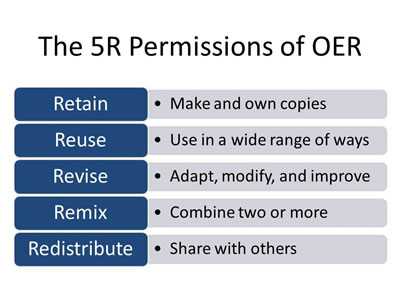What is OER and for who?
Learn what OER exactly means, how to recognize it and to what challenges it offers a solution

by Elisabeth Schmoutziguer
CEO Grasple
In recent times, the term Open Educational Resources (OER) is a familiar one; whether you are a parent, teacher or student. But it may not always be clear exactly what open educational resources are and for whom they intended. This blog unravels the sometimes vague concept by providing clear guidelines regarding cases where OER offers a solution and who exactly can benefit from it.
What is OER?
When it comes to defining OER, there are as many definitions as there are educational professionals advocating for it. According to the European Commission, open education is ‘a way of carrying out education, often using digital technologies. Its aim is to widen access and participation to everyone by removing barriers and making learning accessible, abundant, and customizable for all. It offers multiple ways of teaching and learning, building, and sharing knowledge’.[1]
OER Commons defines open educational resources as: ‘Teaching and learning materials that you may freely use and reuse at no cost, and without needing to ask permission. Unlike copyrighted resources, OER have been authored or created by an individual or organization that chooses to retain few, if any, ownership rights.’[2]
While almost every organization has its own definition, open education is an idealistic yet practical viewpoint that contains two fundamental conceptions: teaching and learning materials that are free to use and aimed at sharing and building upon each other’s work. In our own words, open education is a philosophy describing the way people should produce, share, and build on knowledge – without any limitations, financial barriers, or regulation.
The origin of OER
Education has been delivered with textbooks and content shaped for universal consumption for decades. While this has been effective for a long time, our educational system has partially decayed in the last few years. Worldwide, the prices of copyrighted textbooks have continued to rise, leaving many students without access to the required learning materials.
In the US, for example, the average yearly cost of copyrighted books and supplies for full-time undergraduate students at a four-year university was approximately $1240.00 in 2021[3]. Due to these high costs, 66% of all students have refrained from purchasing learning materials, and 19% indicate that the cost of materials and books directly influences their decision on what classes to take[4].
Educational experts have pondered over how to make access to education more inclusive. Pivoting towards electronic learning materials is often mentioned as a solution, but while it’s currently cheaper, the price of e-books is increasing as well, and copyright restrictions ensure that digital learning materials can’t be shared or resold, so every student pays full price – every single time.[5] This realization is why many people believe copyrighted learning materials – in whatever form – no longer suffice. The movement for Open Educational Resources (OER) directly results from this notion.
Who can use OER?
Essentially, the OER movement aims to make high-quality education available to students. But OER is aimed at more than just learners. Using open educational resources applies to anyone who wants to improve their teaching, learning, and research. OER, therefore, applies to students, educators, faculty staff, and research. Also, using OER isn’t limited to higher education. Primary and secondary educational institutions and learners can also use OER to improve their teaching and learning. So the answer is simple; OER is for anyone who aspires to learn or teach.
Requirements of OER
Open educational resources are the assets that contribute to this philosophy. OER are all learning materials that are freely available and accessible to students and educators worldwide. They can be used for teaching, learning, assessing, and researching in whatever way they see fit. One of OER’s core objectives is to broaden access to educational material and improve the overall quality of teaching and learning worldwide. Therefore, OER must be subject to five permitted activities: the ‘5Rs’ coined by David Wiley. By assessing them, you can recognize OER as truly open[6].

Retain: The right to make, own, and control copies of the content
Reuse: The right to use the content in all kinds of situations
Revise: The right to adapt, adjust, modify, or alter the content itself
Remix: The right to combine the original or revised content with other open content to create something new
Redistribute: The right to share copies of the original content, your revisions, or your remixes with others
Please note that if you aren’t able to plot one of the Rs, it’s not openly licensed content. OER must therefore be cost-free and free to use in any way you see fit. Our article ‘Five Characteristics to Identify Whether Learning Resources are Open’ gives more information about this concept.
What challenges does OER solve?
As a modern-day educator, the overarching goal of your education is to create a real understanding of the topics discussed during your course. Yet helping your students truly grasp the meaning of your subject can be challenging. While it’s natural that a student’s attention level varies according to mood, motivation, and perceived relevance to material, it’s important that students feel engaged during class because a lack of engagement can ultimately result in poorer learning outcomes.
But how can you enhance students’ engagement when lectures are given to larger groups than ever before? And how can you provide every student a personalized learning experience so they learn to grasp the theory – instead of just passing an exam? This is where using OER comes in. There are several challenges OER solves:
Outdated information
One of the most common challenges in education is the expiration date of learning materials. When using textbooks, the subject matter can become obsolete in just a few years. With OER, educators gain the opportunity to update the materials and share their contributions with the world, keeping content timely, relevant, and accurate.
Low completion rates
As an educator, you aim to have as many students pass your class as possible. But when students don’t feel engaged with the subject, their chances of failing increase. This is where OER comes in. Since many open educational resources are available through digital platforms or online, they come in a multimedia format. Presenting information in multiple formats (such as online exercises, explanatory videos, and audio files) can help students easily grasp the learning material and boost completion rates.
Insufficient class materials
In modern-day education, teachers preferably provide every student with a unique learning experience so students truly understand the theory. Standardized textbooks and other copyrighted materials normally don’t take students’ individual knowledge into account. This leads to a generic approach - one-size-fits-all education. However, when using OER, educators gain access to thousands of resources that allow for more augmentation of class materials[7]. Think learning analytics, interactive exercises, and (digital) tools that infinitely differentiate exercises to provide each student a unique trajectory. This allows them to tailor the delivered content to the individual needs of their students.
What emerged from the need for inexpensive educational material has grown into a world-wide movement to battle inequality. OER is now perceived as the future of education. Besides its ideological nature, the combination of technology and shared responsibility offers an organic solution for the sustainability of knowledge and, at the same time, connects with the next generations of learners. If you encounter any of the discussed challenges, do yourself a favor and try to see if OER is the solution for you. Start your search with any of the openly licensed resources below.
- OpenStax
OpenStax publishes high-quality, peer-reviewed, openly licensed textbooks that are free online. - EDUCASE - Open Educational Resources
A collection of OER resources in higher education. - Free Online Course Materials
California State University MERLOT collection of over 35,000 open course materials. - MIT OpenCourseWare (OCW)
A web-based publication of virtually all MIT course content. OCW is open and offers course content and materials related to a wide range of collections, such as Energy, Entrepreneurship, Environment & Sustainability and more.
Interested in learning more about OER and what it can do for your teaching or development? Sign up for our newsletter and receive updates about new blogs or interesting events by clicking the button below.
Sources
[1] Opening up Education: A Support Framework for Higher Education Institutions, 2016. Retrieved via: https://joint-research-centre.ec.europa.eu/what-open-education_en
[2] Definition OER, OER Commons, retrieved via https://www.oercommons.org/about
[3] Melanie Hanson, Average Cost of College Textbooks, August 2021, retrieved via https://educationdata.org/average-cost-of-college-textbooks
[4] Cailyn Nagle and Kaitlyn Vitez, U.S. Pirg Education Fund, Fixing the Broken Textbook Market, June 2020, retrieved via https://uspirg.org/sites/pirg/files/reports/Fixing-the-Broken-Textbook-Market_June-2020_v2.pdf
[5] Trends in College Pricing and Student Aid in 2020, https://research.collegeboard.org/pdf/trends-college-pricing-student-aid-2020.pdf
[6] The Access Compromise and the 5th R, David Wiley, Retrieved via https://opencontent.org/blog/archives/3221
[7] Benefits of using OER, Penn State University, Retrieved via https://oer.psu.edu/benefits-of-using-oer/





